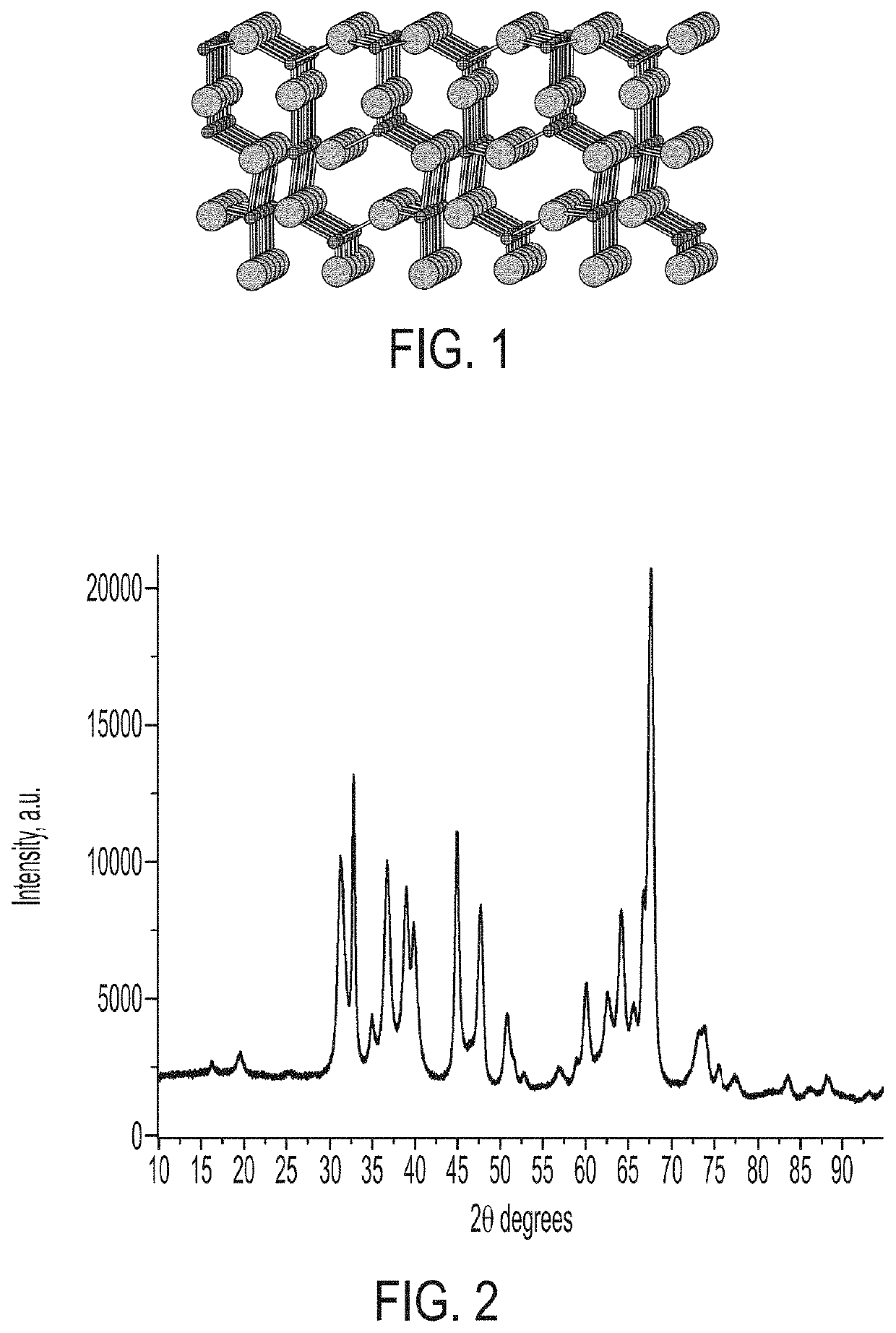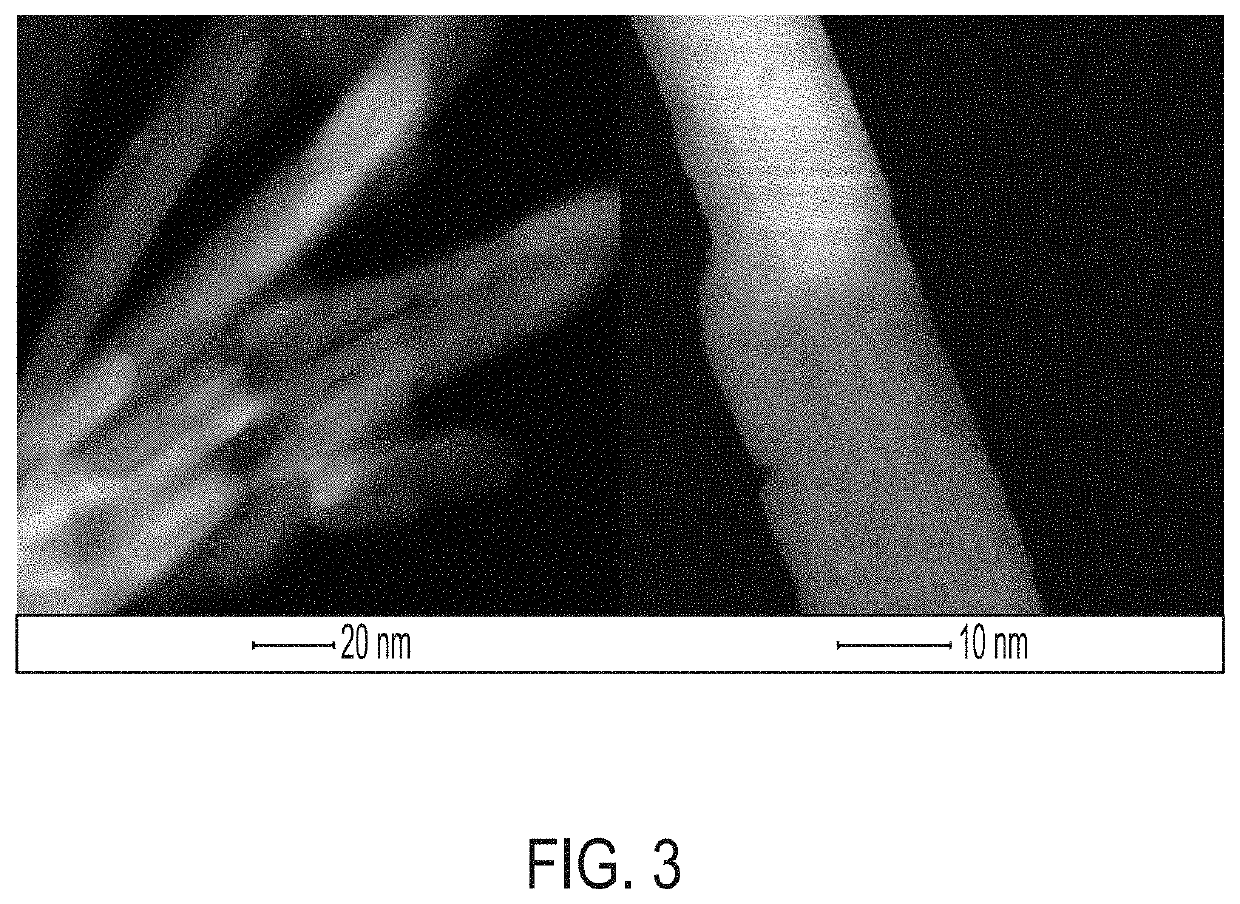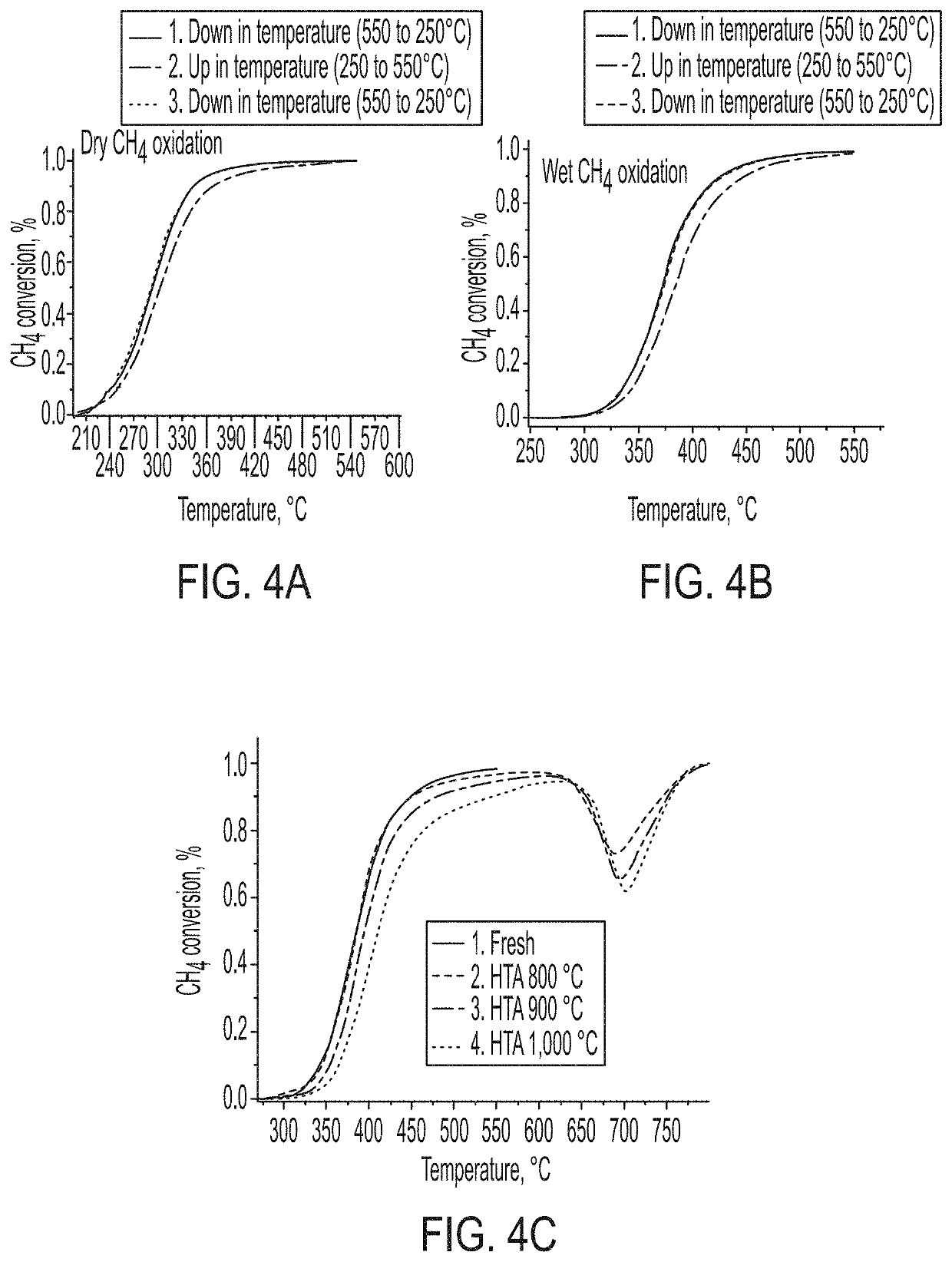Hydrothermally and thermally stable catalytic materials based on theta-alumina
a technology of theta-alumina and catalytic materials, which is applied in the direction of catalyst activation/preparation, physical/chemical process catalysts, metal/metal-oxide/metal-hydroxide catalysts, etc., can solve the problems of material catalytic functions being lost, material still losing their activity, and how can catalytic functions be preserved
- Summary
- Abstract
- Description
- Claims
- Application Information
AI Technical Summary
Benefits of technology
Problems solved by technology
Method used
Image
Examples
examples
[0039]Rod-like boehmite was synthesized using the following method: Al(NO3)3.9H2O (7.15 g) was dissolved in distilled water (80 ml). Then, glacial acetic acid was added to the solution. The resulting solution was transferred to a 125 ml Teflon-lined autoclave, sealed and kept at 200° C. for 12 hours. pH was adjusted with glacial acetic acid to ensure the pH was ˜4 after 12 hours in the autoclave. After cooling to room temperature, the powder was collected by filtration, washed with distilled water, and dried at 200° C. The as-synthesized boehmite powder was then calcined at 800° C. for 2 h to convert it to rhombus-platelet γ-alumina with surface area of approximately 75 m2 / g. Commercial SBA-200 γ-alumina from SASOL with surface area˜180 m2 / g was used without additional pretreatment.
[0040]Rod-like γ-alumina was transformed into pure theta-alumina rods by heat-treating at 1,050° C. for 4 hours. Note that further heating this sample at 1,050° C. for longer time or at 1,150° C. does not...
PUM
| Property | Measurement | Unit |
|---|---|---|
| Temperature | aaaaa | aaaaa |
| Temperature | aaaaa | aaaaa |
| Temperature | aaaaa | aaaaa |
Abstract
Description
Claims
Application Information
 Login to View More
Login to View More - R&D
- Intellectual Property
- Life Sciences
- Materials
- Tech Scout
- Unparalleled Data Quality
- Higher Quality Content
- 60% Fewer Hallucinations
Browse by: Latest US Patents, China's latest patents, Technical Efficacy Thesaurus, Application Domain, Technology Topic, Popular Technical Reports.
© 2025 PatSnap. All rights reserved.Legal|Privacy policy|Modern Slavery Act Transparency Statement|Sitemap|About US| Contact US: help@patsnap.com



